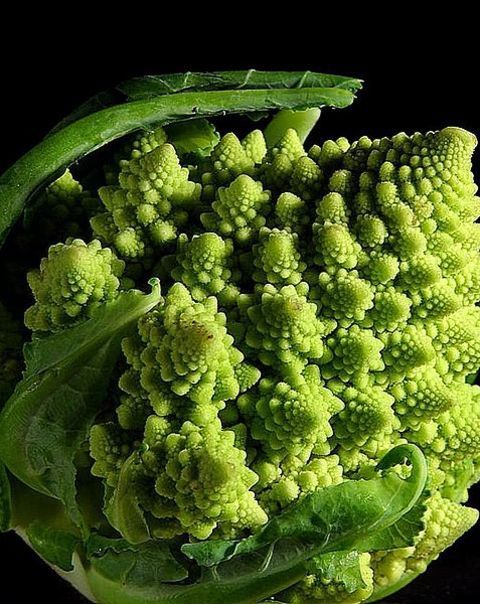#romanesco
Text

Lemon-Turmeric-Ginger Congee with Roasted Romanesco, Shaved Fennel, Avocado, and Pine Nuts (Vegan)
#vegan#appetizer#brunch#porridge#congee#rice#millet#lemon#turmeric#ginger#roasted vegetables#romanesco#fennel#avocado#pine nuts#garlic#green onion#black pepper#sprouts#💛#💚
67 notes
·
View notes
Text
“ Il dialetto gaddiano, il romanesco del Pasticciaccio tanto spesso avvicinato a quello pasoliniano, entra in un rapporto ludico complesso con la lingua, con i suoi differenti livelli, e nel gioco quello che conta è la scrittura, l'artificio della scrittura come suprema abilità di maneggiare (e magari di distruggere, ma dall'interno) il registro del simbolico, la comunicazione (e la tradizione) letteraria. Al contrario il romanesco pasoliniano vuole prima di tutto essere puro suono, nasce indifferente ai significati, esterno alla comunicazione, posto al servizio di un progetto di ipnosi, di trance. È un dialetto "brutto", rigorosamente privo di tensioni formali, tutto concentrato sulla propria noia. Se nei primi racconti di Alí l'artificio letterario tradizionale, inteso come abilità ed eccezionalità linguistica, era ancora ben presente, col dialetto dei romanzi passa in secondo piano e ci sembra di leggere semplici registrazioni vocali. La letterarietà dell'operazione si è spostata, ha cambiato scopo. L'« intervento dello scrittore in quanto tale »* non si indirizza piú al perfezionamento interno della scrittura, ad esibire gli artifici, le astute scelte, a molare e render "bello" il pezzo testuale; ma punta piuttosto all'effetto finale, pratico, del testo: non interessa la tenuta estetica ma il potenziale di fascinazione che il testo può produrre. Perciò i romanzi pasoliniani, nonostante le apparenze spesso alessandrine, possono anche mostrare rozzezze, e trascuratezze di scrittura. Il romanesco non è affatto un registro "d'arte", viene adottato e trascritto in una chiusa brutalità che lavora efficacemente come un suono addormentatore.
Tale vistosa modifica della letterarietà testuale chiarisce le profonde differenze tra l'operazione dialettale romana e il precedente friulano. Nel Friuli il dialetto funzionava come metafora della dimensione immaginaria ma conservava tutti i segni "letterari" del gergo ermetico. L'immaginario era messo in gioco per via di metafora, proprio attraverso la strumentazione raffinata dell'artificio: la cantilena ipnotica del fantasma era prima di ogni altra cosa una scrittura, un'elaborazione testuale, e fingeva abilmente di essere il suo contrario, l'oralità liberata di un registro pre-linguistico. Ora invece l'esperimento pasoliniano è diverso, molto piú radicale. Ora il dialetto dei romanzi, appiattito nella ripetizione, è letteralmente quella oralità dell'immaginario. Se volessimo servirci di una sottile distinzione potremmo dire che il friulano era una « scrittura », il romanesco è invece una « trascrizione » del fantasma.** Certo, anche nel caso del romanesco il dialetto è prima di tutto linguaggio, quindi interno alla generale dimensione della comunicatività; ma Pasolini ne fa un uso così speciale, così limitato (fatto di formule, di indifferenza, quasi di cecità linguistica), che il salto dal dialetto-linguaggio al dialetto-fantasma è facilissimo. Il romanesco, così ridotto e impoverito, è una catena di significanti, senza semantica, e una tale catena non riesce neppure a localizzarsi come sistema di opposizioni, di simboli, di segnali riconoscibili e produttori di senso: insomma, il puro significante di questo dialetto non riesce a diventare organizzazione, griglia simbolica dentro la quale ordinare le cose. “
*Si veda la dichiarazione pasoliniana: « Per assumere nel romanzo il colloquio in dialetto occorre perciò un intervento dello scrittore in quanto tale molto piú accentuato e dichiarato che in una pagina scritta nell'italiano letterario ». Cfr. F. Camon, Il mestiere di scrittore, Milano, 1973, p. 107.
**Ci serviamo di una distinzione enunciata da Lacan, a proposito dei suoi seminari, nella Postface a J. LACAN, Le séminaire livre Xl. Les quatre concepts fondamentaux de la psychanalyse, Paris 1969, pp. 251-254.
---------
Rinaldo Rinaldi, Pier Paolo Pasolini, Ugo Mursia Editore (collana Civiltà letteraria del Novecento - Profili N. 40), 1982¹; pp. 145-46.
#Rinaldo Rinaldi#Pier Paolo Pasolini#saggistica#romanesco#intellettuali italiani del XX secolo#leggere#citazioni#saggi#scrittori italiani del '900#critica letteraria#friuli venezia giulia#poeti italiani del '900#Ragazzi di vita#dialetti italiani#lingua#centenario pasoliniano#cultura#sottoproletariato#retorica#letteratura italiana del XX secolo#Carlo Emilio Gadda#Roma#Quer pasticciaccio brutto de via Merulana#dialetto friulano#dialetto romanesco#jacques lacan#comunicazione#semantica#incomunicabilità#romanzi italiani
11 notes
·
View notes
Text

Romanesco quiche
Romanesco florets and mushrooms are folded into a tofu-based filling and baked in a flaky crust in this complexly flavored, hearty dish. Kala namak and miso paste give the tofu a deeply savory, eggy taste; the vegetables are spiced with mustard seeds, baharat, and black pepper. Serve warm with a green salad.
Recipe under the cut!
Patreon | Tip jar
Fills one 9" pie pan; serves 4-6.
INGREDIENTS:
For the pâte brisée:
1 1/4 cup (150g) all-purpose or pastry flour
1/2 cup (100g) cold vegan margarine
A few Tbsp cold water
For the filling:
1 block tofu, drained and patted dry
1 tsp kala namak (black salt)
2 Tbsp tahini
2 Tbsp nutritional yeast
1/2 tsp white miso paste
1/2 tsp ground black pepper
1 1/2 cup (135g) mixed vegan parmesan and swiss
1 bunch parsley
A few sprigs of rosemary or thyme
3 cloves garlic, chopped
1 red onion, diced
4oz (113g) cremini or mixed mushrooms
2 cups (200g) romanesco, broken into small florets (measured after removing stems)
1 tsp baharat (or substitute ground cumin)
1/4 tsp black pepper, or to taste
1 tsp yellow mustard seeds
1/4 tsp salt, or to taste
INSTRUCTIONS:
For the crust:
1. Measure flour into a large mixing bowl (if measuring by volume, spoon flour into dry measuring cups until overflowing and then level with the flat of a knife–this will prevent you from adding too much flour and producing a dry dough).
2. Cut margarine into the flour with a knife or a pastry blender until the bits of margarine are about the size of peas (these will melt to provide flakiness and texture to the dough).
3. Add cold water a tablespoon at a time until the dough just comes together–you’ll need less than you might think! Avoid overworking the dough–you don’t want too much gluten to develop, which would produce a tough crust.
4. Wrap the dough in plastic wrap and refrigerate for about half an hour–it will be easier to roll out if you allow it to rest.
5. Roll out dough between two lightly floured sheets of plastic wrap or wax paper. Form a rough circle by placing your rolling pin in the center of the dough and pushing outward, repeating the motion as you continue to turn the dough. The dough should be a few inches larger in diameter than your pie pan.
6. Remove the top layer of plastic wrap and flip the dough over into a 9" pie pan. Drape the dough into the edges of the pan, making sure that it is pressed all the way down into the corners (rather than being stretched over them). Don’t work the dough with your hands too much, or you risk melting the butter.
7. Prick holes into the bottom and sides of the dough with a fork. For best results, refrigerate the crust for another half hour or so before baking.
8. Cover the center of the dough with aluminum foil or parchment paper and fill with pie weights, or something like dried beans, so that the dough doesn’t puff up during baking. Parbake at 425 °F (220 °C) for 10 minutes, or until the edges are lightly golden brown.
For the filling:
1. Blend tofu, black salt, tahini, nutritional yeast, and miso paste in a food processor until combined. Stir in grated cheese, salt, and black pepper.
2. Blanch the Romanesco florets in an inch of boiling water until slightly tender, about 1-2 minutes. Remove from water and set aside.
3. Heat olive oil in a large skillet on medium-high. Add mustard seeds and fry for a couple minutes until fragrant and popping into the air.
4. Add onion and sauté for 5-8 minutes until softened and translucent.
5. Add baharat and black pepper and allow to bloom in the oil for abour 30 seconds, until fragrant.
6. Add mushrooms and salt and sauté until mushrooms begin to brown, 4-5 minutes.
7. Add garlic, thyme and rosemary and cook until fragrant, 1-2 minutes.
8. Add Romanesco and parsley and sauté for another 2 minutes.
9. Remove from heat and pour vegetable mixture into a large mixing bowl. Add tofu and cheese mixture and stir to combine.
To assemble:
1. Pour the finished filling into the parbaked crust. Place the pie pan on top a rimmed baking sheet and bake at 375 °F (190 °C) for 30-40 minutes, until golden brown on top. A toothpick inserted into the center should come out clean, but the filling may still wiggle a bit. Allow to cool slightly before serving.
Serve with freshly cracked black pepper and a green salad.
35 notes
·
View notes
Text
Sałata ze szpinakiem, kalafiorem, gruszką, awokado, Gorgonzolą i czosnkowym winegretem
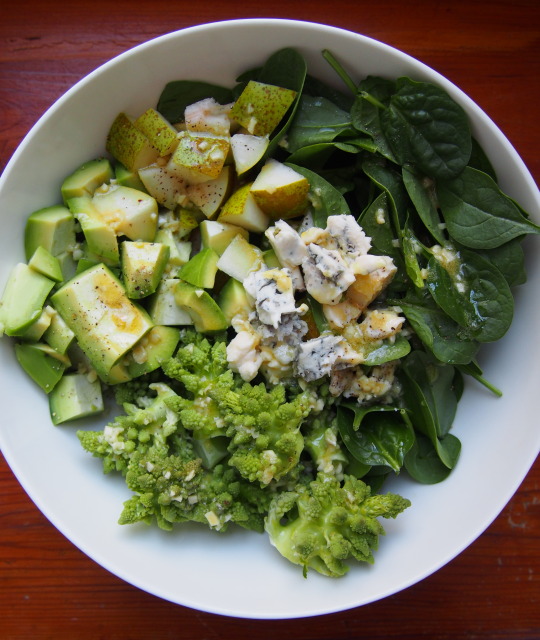
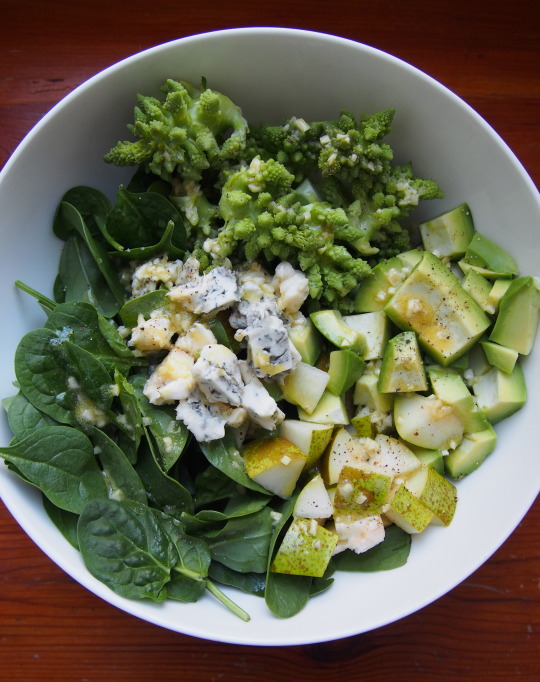

No to w końcu kalafior czy brokuł?! Czym jest ten podobny do kalafiora, a smakujący jak brokuł atrakcyjny przybysz z Włoch, Pan Romanesco?
Kalafior, brokuł, kapusta głowiasta, brukselka, a także kalarepa to różne odmiany tego samego gatunku Brassica oleracea i jako takie mogą być poddawane krzyżowaniu (naturalnemu lub sztucznemu). Tak powstało szereg roślin uprawnych i ozdobnych.
Istnieją dwie formy Brassica oleracea, które można określić jako brokuł, jednak obie biologicznie uznawane są za odmiany kalafiora (Brassica oleracea var. Botrytis). Pierwsza z nich ma kształt zwykłego kalafiora, tego, znanego u nas i lubianego od lat. Druga charakteryzują się stożkowatymi, niezwykłymi fraktalnymi wzorami różyczek. Ma żółty lub żywy zielony kolor. Ta druga to właśnie odmiana Romanesco.
Zawikłane? Może trochę. Mimo to warto czasem zagłębić się w materię tego, co mamy na talerzu - szczególnie dotyczy to nowości - choćby po to, by wiedzieć co wkładamy do ust. Zdarzają się bowiem potrawy toksyczne - nawet podane z uśmiechem na złotej tacy - od których należy bezwzględnie stronić. Szczęśliwie ta sałata do nich nie należy. To samo zdrowie!
Składniki:
mała główka Romanesco
duża garść młodego szpinaku
gruszka
awokado
ok. 100 g Gorgonzoli
sól i czarny pieprz do smaku
Czosnkowy winegret
łyżeczka musztardy Dijon
łyżeczka miodu
2 łyżki soku z cytryny
łyżka octu jabłkowego
6-7 łyżek oliwy z oliwek e.v.
2 ząbki czosnku
sól i czarny pieprz do smaku
Wykonanie:
Opłukać kalafior, gruszkę i szpinak (jeśli potrzeba). Szpinak osuszyć w wirówce.
Kalafior podzielić na różyczki wielkości kęsa, a łodygi pokroić w podobnej wielkości kostkę. Awokado rozciąć, wyjąć pestkę, a następnie połówki miąższu i pokroić w kostkę, starając się by wielkością zgrał się z resztą. Skropić sokiem z cytryny. Ser pokroić w kostkę. Gruszkę pozbawić gniazda nasiennego i również pokroić w kostkę.
Do średniej wielkości garnka wlać niewielka ilość wody. Wstawić sitko do gotowania na parze i wsypać na dno części twardsze, a na górę różyczki. Przykryć pokrywka i gotować kilka minut (ok. 4), aż warzywo straci surowość, ale pozostanie chrupiące.
Przygotować winegret. Czosnek rozgnieść płaską stroną noża, obrać i maksymalnie rozdrobnić. W sosjerce połączyć czosnek z musztardą, miodem i dobrze wymieszać. Dodać sok z cytryny, ocet, odrobinę soli i pieprzu i ponownie wymieszać. Cienkim strumyczkiem wlewać oliwę, cały czas mieszając aż do uzyskania emulsji.
W misie wymieszać wszystkie składniki, podlewając odpowiednią ilością winegretu.
Podawać z opieczonym pieczywem.
#sałaty#salads#sałata ze szpinakiem kalafiorem gruszką awokado gorgonzolą i czosnkowym winegretem#spinach cauliflower pear avocado Gorgonzola and garlic vinaigrette salad#młody szpinak#baby spinach#kalafior romanesco#romanesco#romanesco broccoli#awokado#avocado#gruszka#pear#gorgonzola#gorgonzola cheese
4 notes
·
View notes
Text
Te auguro dieci minuti
di intelligenza
pe capi' quanto sei idiota🤣
14 notes
·
View notes
Text
CHIVES YEAR 3 still growing despite the horrible lack of discipline in my gardening career. #shame
HEIRLOOM TOMATO SAMMY 🍅

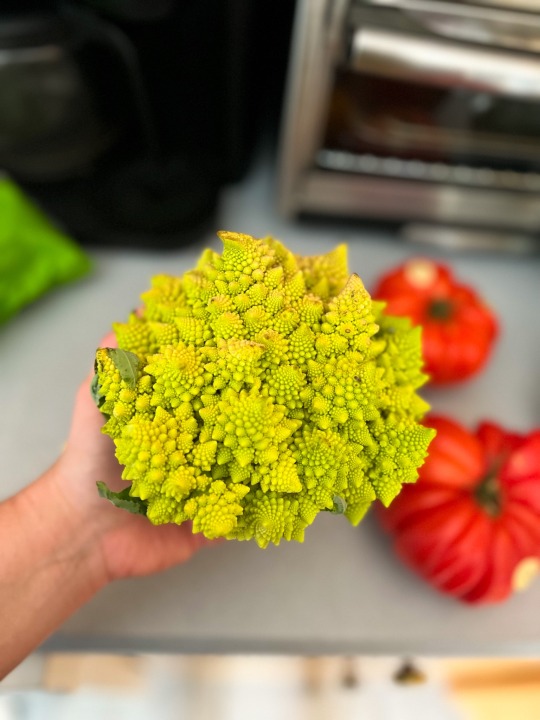


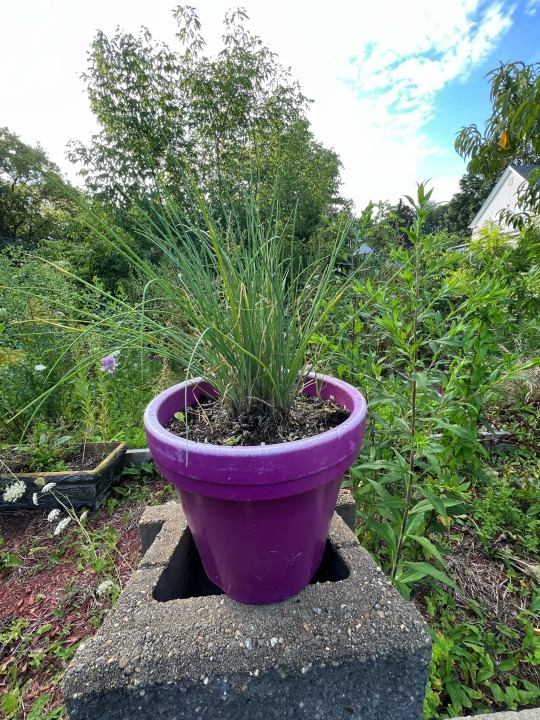
#cooking#garden#gardening#gardening tips#herb garden#plants#recipes#vegetable garden#flowers#greenhouse#romanesco#heirloom#tomatoes#basil#mozzarella#italians#chives#cook#eat#sad summer
5 notes
·
View notes
Text
De notte e de giorno.
Dar centro alla periferia.
Nun me stancherò mai de ditte quanto sei bella Roma mia.
Dark Poet
#poesia#poesia mia#poesia tumblr#poesia romantica#pensieri#frasi pensieri#frasi tumblr#scrittura#roma#dialetto romano#romanesco
5 notes
·
View notes
Text
In My San Diego Garden and Kitchen
Romanesco is the consummation of cauliflower season. It usually is the last of the varieties to be harvested. The plants are enormous and each of the four heads weighed 3-4 pounds this year. Read more about Romanesco in a previous post.
That’s me behind the Romanesco for perspective. Harvest generates quite a pile of leaves for the compost and a number of bunnies in the ‘hood. I’ve not been able to interest any humans in the leaves and I’m too overwhelmed with cauliflower to think about options for the foliage.
Despite my staggered planting, all seventeen plants were ready to harvest within a two week period. Some were shared with neighbors and foodie friends who know just what to do with a Romanesco or purple cauliflower.
Unlike navel oranges, tangerines do not “store” well on the tree. It was time to remove them all and begin the neighborhood distribution. No one turns down the Satsuma tangerines. We’ve stored a couple dozen of the ugly ones in the fridge for our continued enjoyment. The crop was the largest we’ve ever had though it’s a mystery why. They’re extra juicy this year, perhaps due to our regular and abundant rain.
It was also the week for a major harvest and distribution of lettuce. Most of this batch is Outredgeous with some Sea of Red and Dark Red Lollo Rossa. As the weather warms this week, some of the lettuce will think about bolting so there may be another substantial harvest.
Check my blog post In My Garden, Late January to see the garden in its winter glory.
Several batches of Sweetened Oven Dried Orange Slices utilized some of the abundant navel oranges. It’s a sweet-tart way to extend the season as they store well in glass jars.
About a dozen unseasonable strawberry guavas bring winter delight. These are about an inch in diameter and luscious. I pull a couple from the fridge every day and warm them in a sunny window to appreciate all the goodness.
February Gold daffodil cheers me on the way to the garden.
Check my What I’m Planting Now page. It’s been a busy week in the garden planting the place opened by the cauliflower harvest.
Harvest Monday, hosted by Dave at Happy Acres Blog returns this week. Join in and see what garden bloggers around the world harvested last week.
To leave a comment, click on “Leave a comment/Show comments,” enter the comment, then insert your name. Finally, click on “Comment as Guest” to post comment.
#Romanesco#Satsuma tangerines#Outredgeous lettuce#sweetened oven dried orange slices#strawberry gauvas#February Gold daffodils
2 notes
·
View notes
Text
Windows 11
Perché me dite” Un giorno de questi se vedemo ? “e nun se vedemo mai ?Perché me dite ” Se aggiornano “e nun se aggiornamo mai ?Persino Windows 11 è mejo de voi…Senza promette a votoluii sì che se aggiorna per davero !!Marco Vasselli © 2024
View On WordPress
#2024#Dialetto romanesco#La poesia porta lontano#Marco Vasselli#Poesia in dialetto romanesco#Romanesco
0 notes
Text
beetroot, apple and romanesco cauliflower

0 notes
Text

the strange Christmas tree-shaped florets of Romanesco cauliflower
#fresh vegetables#fresh veggies#cauliflower#vegetables#romanesco#romanesco cauliflower#green cauliflower#my food
1 note
·
View note
Text

Mezza Platter (Vegan)
#vegan#appetizer#snacks#charcuterie#mezze platter#mediterranean cuisine#crudites#radishes#carrots#romanesco#grilled#eggplant#artichokes#bell peppers#zucchini#orange#grapes#olives#pomegranate#chickpeas#dips#hummus#baba ganoush#lemon#bread#eat the rainbow
56 notes
·
View notes
Photo

Normalerweise gibt es hier immer Gartenbilder, aber heute geht die Entdeckungsreise ins Gemüsefach unseres Kühlschranks: Unglaublich, wie wunderschön die fraktalen Muster des #Romanesco-#Blumenkohls sind. Die spiralförmigen, sich immer feiner wiederholenden Strukturen des Blütenstandes sind sozusagen eine essbare Fibonacci-Folge 🐚. Aber es kostet mich schon Überwindung, so viel Ästhetik einfach herunterzuschlingen.
1 note
·
View note
Text
Vegetable Salad - Italian Romanesco Cauliflower Salad Recipe

Romanesco, cauliflower, and broccoli are layered in this classic Italian dish to create a vibrant, multicolored salad that is topped with a straightforward vinaigrette.
0 notes
